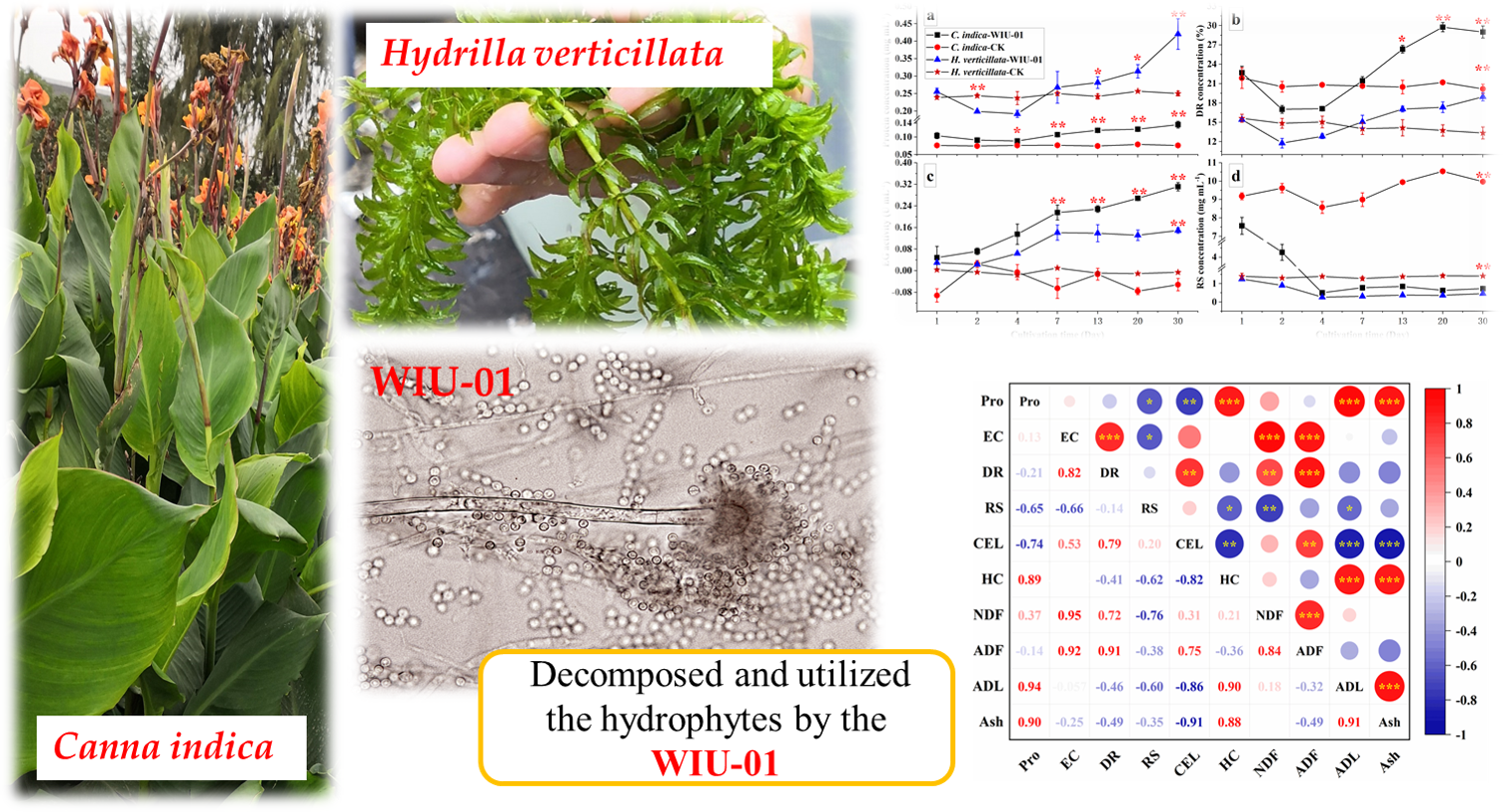
Many eutrophic lakes contain rapidly growing hydrophytes. Overgrown biomass is usually me-chanically harvested and thrown away, leading to resource waste and secondary environmental pollution. Microbial degradation is an economically and environmentally friendly approach for managing hydrophytic waste, fuelling the search for efficient biomass degraders. Here, we present isolation and characterization of Aspergillus sydowii WIU-01, a novel cellulolytic fungus. Strain WIU-01 was isolated from air. The degradation rate (29.75 vs. 21.95%) and endoglucanase activi-ty (0.31 vs. 0.16 U mL–1) of the fungus were higher in Canna indica (emergent plant) medium than in Hydrilla verticillata (submerged plant) medium, accordingly. Further, fungal endoglucanase ac-tivity was significantly positively correlated with the degradation rate, neutral detergent fiber con-tent, and acid detergent fiber content of hydrophyte powder. Fungal biomass was significantly negatively correlated with reducing sugar and cellulose content of hydrophyte medium, but was significantly positively correlated with hemicellulose, acid detergent lignin, and ash content of the medium. Collectively, these observations indicate that A. sydowii decomposes emergent and sub-merged plant mass without acid–base sample pretreatment, albeit its endoglucanase activity is rela-tively low. This highlights the role of cellulolytic microorganisms in the natural environment and the notion that the environment can be a source of cellulolytic microorganisms for potential envi-ronmentally friendly applications.
Total file downloads: 4